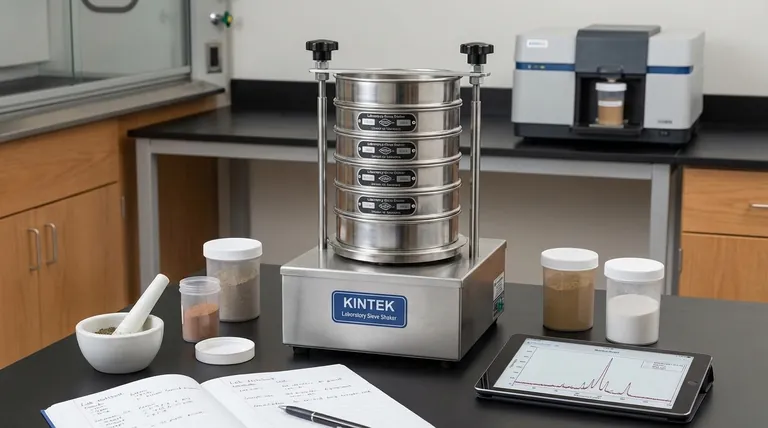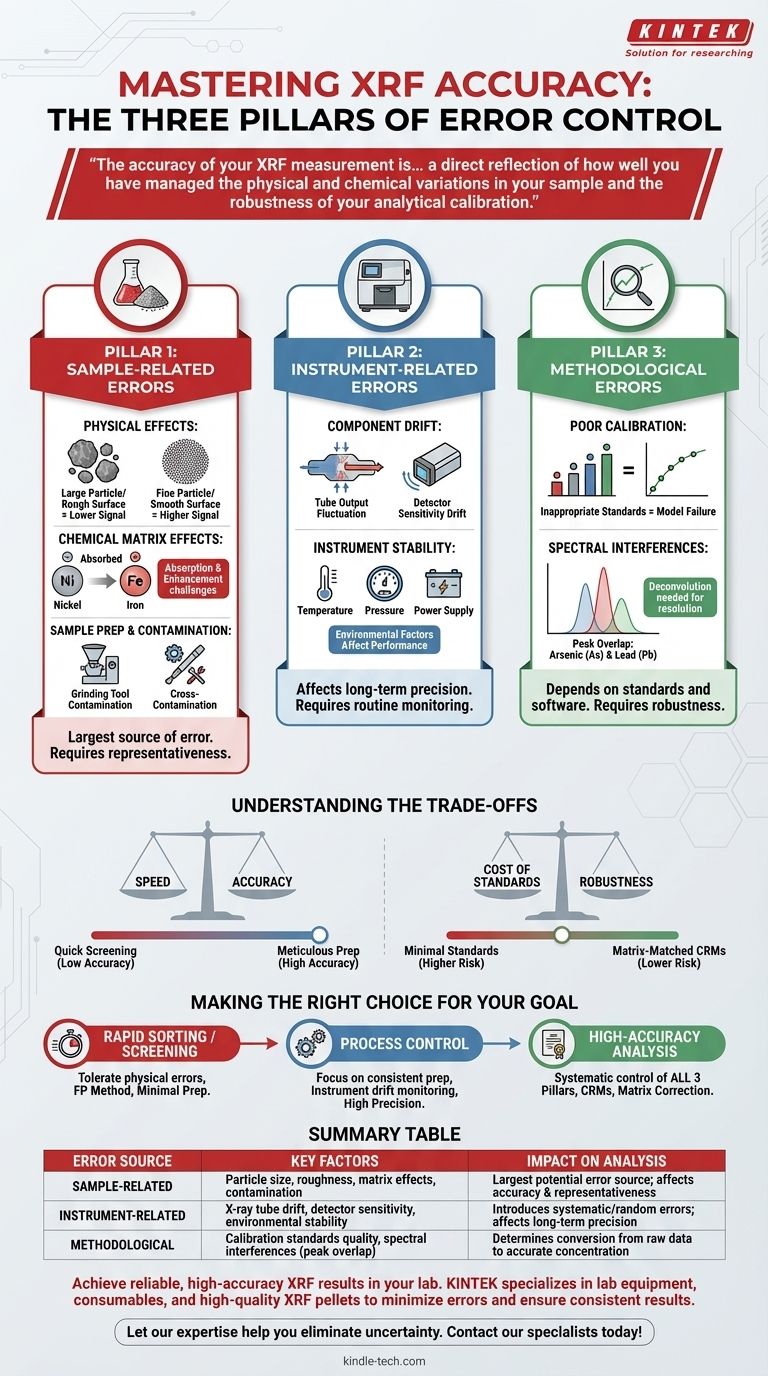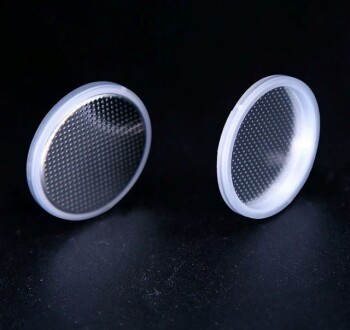X선 형광(XRF) 분석에서 오차는 세 가지 주요 영역에서 발생합니다: 샘플 자체(물리적 및 화학적 특성), 기기의 하드웨어 및 안정성, 사용되는 분석 방법 또는 보정입니다. 준비 중 샘플 오염과 같은 요인도 중요하지만, 진정으로 정확한 결과는 이 세 가지 영역 전반의 변수를 제어하는 데 달려 있습니다.
XRF 측정의 정확도는 분광계 품질의 기능일 뿐만 아니라 샘플의 물리적 및 화학적 변화를 얼마나 잘 관리했는지, 그리고 분석 보정의 견고성을 직접적으로 반영합니다.
XRF 오차의 세 가지 기둥
신뢰할 수 있는 결과를 얻으려면 잠재적인 부정확성이 도입될 수 있는 위치를 이해해야 합니다. 이러한 출처를 세 가지 뚜렷한 범주로 그룹화할 수 있습니다.
기둥 1: 샘플 관련 오차
이것은 종종 가장 큰 오차 원인입니다. 분광계는 제시된 샘플만 측정할 수 있습니다. 샘플이 벌크 재료를 진정으로 나타내지 않는다면 결과는 결함이 있을 것입니다.
물리적 효과
샘플의 물리적 특성은 X선 신호에 큰 영향을 미칩니다. 주요 요인에는 입자 크기, 표면 거칠기 및 샘플 균일성이 포함됩니다.
더 미세한 입자는 일반적으로 더 큰 입자보다 더 강한 형광 신호를 생성합니다. 일관성 없는 분쇄 또는 거친 표면은 중요하고 예측할 수 없는 오차로 이어질 수 있습니다.
화학적 매트릭스 효과
이는 샘플의 다른 원소가 측정하려는 원소의 X선을 흡수하거나 증강하는 방식을 나타냅니다. 이는 XRF의 근본적인 과제입니다.
예를 들어, 높은 농도의 철은 니켈의 형광을 크게 흡수하여 니켈이 실제보다 덜 농축된 것처럼 보이게 합니다. 이러한 효과는 수학적으로 보정되어야 합니다.
샘플 준비 및 오염
샘플을 준비하는 방식은 중요한 제어 지점입니다. 여기서 도입된 오차는 되돌릴 수 없습니다.
언급했듯이, 분쇄 장비로 인한 오염은 외부 원소를 도입할 수 있습니다. 마찬가지로, 준비 도구를 사용 사이에 세심하게 청소하지 않으면 샘플 간 교차 오염이 발생할 수 있습니다.

기둥 2: 기기 관련 오차
현대의 XRF 분광계는 안정성이 높지만 완벽하지는 않습니다. 하드웨어 변동은 분석에 체계적이거나 무작위적인 오차를 도입할 수 있습니다.
구성 요소 드리프트
가장 중요한 두 가지 구성 요소인 X선관과 검출기는 시간이 지남에 따라 성능 변화를 겪을 수 있습니다.
관의 출력 강도는 변동될 수 있으며, 검출기의 민감도는 온도 변화나 노화로 인해 드리프트될 수 있습니다. 이러한 변화는 일반적으로 느리며 정기적인 모니터링으로 관리할 수 있습니다.
기기 안정성
주변 온도, 기압(일부 시스템에서) 및 전원 공급 안정성과 같은 요인은 분광계의 성능에 영향을 미칠 수 있습니다.
기기에 대한 제어된 환경을 유지하는 것은 장기간에 걸쳐 높은 정밀도의 분석 결과를 얻는 데 중요합니다.
기둥 3: 방법론 및 보정 오차
완벽한 샘플과 안정적인 기기가 있더라도 최종 결과는 분석 방법과 보정 품질에 전적으로 달려 있습니다.
부적절한 보정
보정은 원시 X선 강도를 원소 농도로 변환하는 수학적 모델입니다. 이 모델은 이를 생성하는 데 사용된 표준만큼만 좋습니다.
알 수 없는 샘플의 화학적 매트릭스와 일치하지 않는 불충분하거나 부적절한 보정 표준을 사용하는 것은 주요 분석 오차의 주요 원인입니다.
스펙트럼 간섭
때로는 두 가지 다른 원소의 특성 X선 라인이 너무 가까워서 검출기가 분해할 수 없습니다. 이를 피크 중첩이라고 합니다.
예를 들어, 비소의 K-알파 선은 납의 K-베타 선과 중첩됩니다. 각 원소에 대해 정확한 결과를 보고하기 위해 이러한 피크를 수학적으로 역분해하는 정교한 소프트웨어가 필요합니다.
상충 관계 이해
모든 오차 원인을 제어하는 것은 시간이 많이 걸리고 비용이 많이 들 수 있습니다. 핵심은 특정 목표에 맞게 준비 및 분석의 엄격함을 일치시키는 것입니다.
속도 대 정확도
준비되지 않은 샘플에 대한 빠르고 "즉시 측정" 분석은 간단한 재료 식별 또는 스크리닝에 충분할 수 있습니다.
그러나 이 접근 방식은 정확도를 희생하며, 펠릿 분쇄 및 압착과 같은 세심한 샘플 준비가 필수적인 품질 관리 또는 규정 준수에는 완전히 부적합합니다.
표준 비용 대 견고성
견고한 보정을 생성하려면 광범위한 고품질, 매트릭스 일치 인증 표준 물질이 필요하며, 이는 비용이 많이 들 수 있습니다.
최소한의 표준 세트를 사용하거나 "유형 표준화"(하나 또는 두 개의 로컬 샘플로 공장 보정 조정)에 의존하는 것은 저렴하지만 샘플이 표준에서 벗어날 경우 오차 위험이 더 높아집니다.
목표에 맞는 올바른 선택
분석 전략은 답해야 하는 질문에 의해 결정되어야 합니다.
- 신속한 재료 분류 또는 스크리닝에 중점을 두는 경우: 물리적 효과로 인한 오차를 허용하고 간단한 기본 매개변수(FP) 방법을 사용하여 샘플 준비를 최소화할 수 있습니다.
- 알려진 재료 유형에 대한 공정 제어에 중점을 두는 경우: 주요 관심사는 정밀도이므로 매우 일관된 샘플 준비와 정기적인 기기 드리프트 모니터링에 집중해야 합니다.
- 인증 또는 연구를 위한 고정밀 분석에 중점을 두는 경우: 세심한 샘플 준비, 보정을 위한 인증 표준 물질 및 매트릭스 보정 소프트웨어를 사용하여 세 가지 기둥을 체계적으로 다루어야 합니다.
궁극적으로 XRF에서 정확도를 달성하는 것은 체계적인 제어의 연습이며, 잠재적인 오차 원인을 이해하는 것이 이를 제거하기 위한 첫 번째 단계입니다.
요약표:
| 오차 발생원 | 주요 요인 | 분석에 미치는 영향 |
|---|---|---|
| 샘플 관련 | 입자 크기, 표면 거칠기, 화학적 매트릭스 효과, 오염 | 가장 큰 잠재적 오차 원인; 결과의 정확성과 대표성에 영향 |
| 기기 관련 | X선관 드리프트, 검출기 민감도, 환경 안정성 | 체계적 또는 무작위 오차 유발; 장기적 정밀도에 영향 |
| 방법론적 | 보정 표준 품질, 스펙트럼 간섭(피크 중첩) | 원시 데이터에서 정확한 농도 값으로의 변환 결정 |
귀하의 실험실에서 신뢰할 수 있고 고정밀 XRF 결과를 얻으십시오.
정밀 분석으로 가는 길은 샘플, 기기 및 방법 전반에 걸쳐 변수를 제어하는 것을 필요로 합니다. KINTEK은 샘플 준비 오차를 최소화하고 일관된 결과를 보장하도록 설계된 고품질 XRF 펠릿, 프레스 및 액세서리를 통해 실험실 요구 사항을 충족하는 실험실 장비 및 소모품을 전문으로 합니다.
저희의 전문 지식이 불확실성을 제거하도록 도와드리겠습니다. 귀하의 특정 응용 분야와 분석 목표를 지원할 수 있는 방법에 대해 논의하려면 지금 전문가에게 문의하십시오.
시각적 가이드

관련 제품
- 실험실 시험 체 및 체질 기계
- 3차원 전자기 체질 장치
- 실험실 멸균기 랩 오토클레이브 펄스 진공 리프팅 멸균기
- PTFE 족집게 맞춤형 PTFE 테플론 부품 제조업체
- 액정 디스플레이 자동형 수직 압력 증기 멸균기 실험실 멸균기 오토클레이브


















